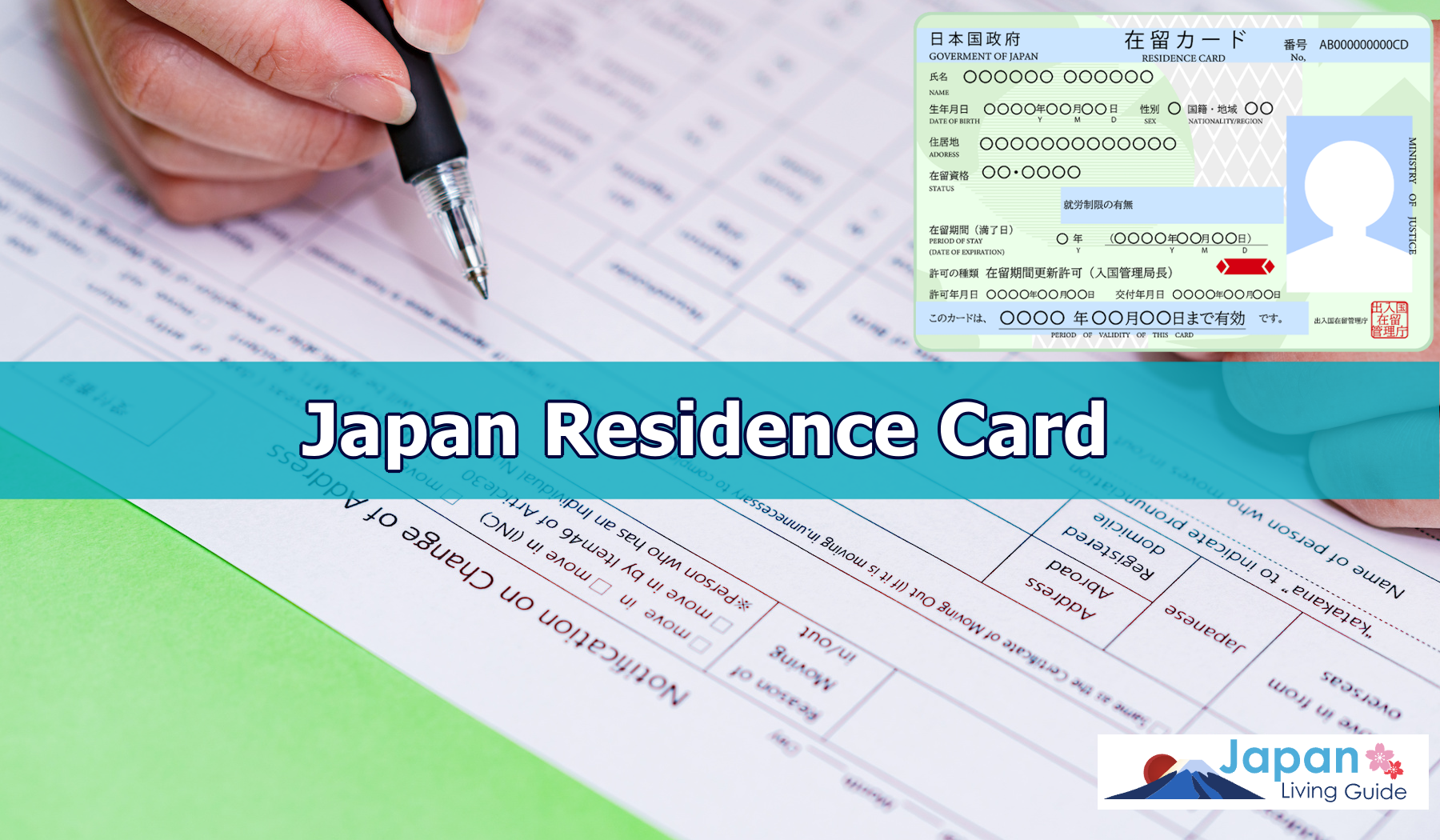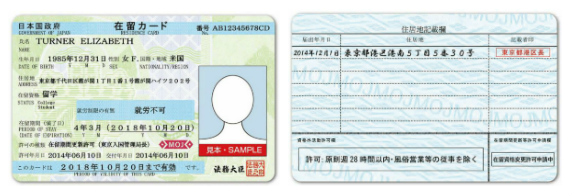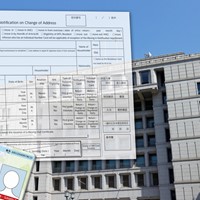Japan Residence Card (Zairyu Card) and Residence Management System

If you're moving to Japan, you definitely need to be aware of Japan residence card (zairyu card) and the residence management system. In this article, you will learn about residence card in Japan, residential registration, leaving/re-entering Japan, and more.
We have many articles covering administrative and legal information including Japan's national pension system, My Number Card, child allowance system, free legal consultation in English for foreign residents, and more. There are also visa-related articles such as "Digital Nomad in Japan: Rise of Short to Medium-Term Stays from Overseas", "Things You Should Know about Status of Residence (Visa) in Japan", "Japan Medical Tourism / What is the "Visa for Medical Stay"?", and more.
Short Term Residents in Japan
If you are staying in Japan for less than 90 days, you will receive a stamp in your passport when you enter the country. That's it. It will look resemble the stamp in the picture below.

Mid to Long-term Residents in Japan
If you're going to be living here for any length of time, assuming you've properly arranged for your visa before coming to Japan, then the below information will apply to you.
The Residence Card (Zairyu Card)

Foreigners who come to Japan with most visas allowing for a residency longer than 90 days, will be issued a Residence Card (called Zairyu Card in Japanese). Please note that foreigners with certain statuses of residences are not issued a residence card such as "official", "diplomat", "temporary visitor", etc.
If a foreigner receives a landing permit at Haneda, Narita, Kansai, Fukuoka, Hiroshima, New Chitose, and Chubu Airports, the residence card will be issued at that airport. In case of other airports and ports, zairyu card will be delivered to a foreigner's address after residential registration.
The card contains basic personal information such as your name, date of birth, gender, nationality, address, residency status, permission to work, and allowed period of stay, etc. When there are changes in your name, gender, nationality, date of birth, you have to notify your Regional Immigration Services Bureau within 14 days. Depending on your status of residence, there might be other changes you would have to report about related to your employment, martial status, etc. For information, please check Immigration Services Agency's website (available in multiple languages).
Expiration of Residence Card
Please keep in mind that your residence card will expire after 7 years if you are a permanent resident or highly skilled professional (ii). For other types of residence, your residence card expires on the same day your period of stay expires.
If you would like to continue living in Japan beyond your approved period of stay, you need to apply for extension of your period of stay and submit necessary documents to your Regional Immigration Services Bureau. It may take around 2 weeks - 1 month or even longer till you get the result of your application. You can apply staring from 3 months before the date of expiration. In case of hospitalization, etc., it may be possible to apply even earlier. If you need to change your status of residence in Japan, there is also procedure for it.
The procedure is different for permanent residence and highly skilled professional (ii) status of residence, which do not have limited period of stay, but have period of validity of zairyu card. In case of these statuses of residence in Japan, you would need to extend the valid period of your zairyu card. If you are 16 years old or older, you can do so starting 2 months before the expiration date. Please note that you will receive your new residence card on the same day.
In case of foreign residents under the age of 16, the residence card is valid till the day before 16th birthday (for zairyu cards issued on November 1, 2023 or later) or till 16th birthday (for zairyu cards issued on October 31, 2023 or before), or when the period of stay expires, whichever comes first.
Residential Registration

Once you finalize your living arrangements, you then need to report to the local administrative office (generally the ward office "Kuyakusho") and complete the "residential registration" within 14 days.
Once complete, your address will be added to your Residence Card and you will receive a "Certificate of Residence". If you bring family with you, be sure to bring proof of their relationship with you. Proof can either be a marriage or birth certificate, as required so you can register them as family/dependents.
Note: You can allow someone else to complete the residential registration on your behalf as long as you provide a written letter of proxy.
For more details about Address Registration and Changing Address, please refer to "Registering or Changing Your Address in Japan".
Leaving/Re-entering Japan
One of the benefits of this Residency Management System (as opposed to the older Alien Registration System) is that if you plan to leave and then re-enter Japan within one year after you depart, you are not required to apply for a re-entry permit.
The important thing is that you have to place a check mark on "Departure With Special Re-Entry Permission" on the Embarkation Card when you leave Japan at the airport.
In this way the immigration bureau can record your status as you will be back to Japan, otherwise you may be obliged to do all the procedures again to obtain a new VISA (even if you have a valid residence card), therefore this is something very important to remember if you plan to travel outside Japan and come back.
Please read further about The Re-Entry Permit System

If you are planning to re-enter Japan after one year has elapsed from your departure date from Japan, then you will need to apply for a re-entry permit from Regional Immigration Services Bureau before you leave the country or your visa will expire automatically. You can get either a single re-entry or multiple re-entry permit that is valid until the end of your residency period (up to a maximum of 5 years).
Automated gates are available at certain airports and terminals such as Terminal 3 of Haneda Airport, Terminals 1 and 2 of Narita Airport, Kansai Airport, and Terminal 1 of Chubu Airport. Please note that you would need to register in advance to use automatic gates. For more information on automated gates for foreign residents in Japan, please check this guide.
The Residence Card in Daily Life
The Residence Card serves as an ID card in daily life. You will be asked to produce a Residence Card that shows your current address on it in many situations during everyday life, such as when you buy a mobile phone or open a bank account. It is also likely to be requested in situations where you interact with officials such as immigration officials, police officers, postal employees, healthcare workers, etc.
It is necessary to carry your residence card at all times, and if requested by immigration officers, immigration security officers, police officers, etc., you are required to present it. If you do not carry your residence card, you may be subject to a fine of up to 200,000 yen. If you refuse to present it, you may face imprisonment for up to one year or a fine of up to 200,000 yen. You should carry your Residence Card with you at all times.
Those under the age of 16 are not required to carry a residence cards at all times as they are exempt from the clause that requires persons over the age of 16 to do so.
If your residence card is lost, you would need to apply for re-issuance of your residence card at your Regional Immigration Services Bureau within 14 days. For information on how to find lost items in Japan, please check this article.
Moving within Japan
When you move within Japan, you need to submit the change of address forms at your local ward/administrative offices within 14 days of the move. The specifics of what forms need to be submitted vary by location so please check with your local ward/administrative office for details. Below are the two most common types of forms that will need to be filled out when moving:
転出届 (tenshutsu-todoke)
"Notification of moving out" at the ward/administrative office for the old address you are moving from.
転入届 (tennyuu-todoke)
"Notification of moving in" at the ward/administrative office for the new address you are moving to.
This is an example form, taken from the English version of the change of address form from Minato Ward in Tokyo.

When you submit your change of address form(s), you will also fulfill the requirement for notifying the Ministry of Justice of your current address. Your new address will be written on the back side of the residence card.
Conclusion
Forms, visas, and residence cards, there is certainly a lot of paperwork to be completed when moving to Japan. When you consider the immigration and residency management system for foreign nationals in Japan as of late, it can be a little disconcerting to think about moving here. In the midst of setting up your life in Japan, you want to make certain that there aren't any snags related to government paperwork that could hinder your transition. Therefore, we hope that these tips and guidelines have been helpful and will help to ease your transition to life in Japan.
Please note that the information in this article is not a legal advice. If you have questions or concerns regarding rules, necessary procedures, etc., please check with Immigration Services Agency in Japan or consult with a legal scrivener, lawyer, etc.

- International Schools in Japan
- A list of international schools (kindergartens to high schools) with English, French, or German as the main language of instruction, organized by prefecture.













